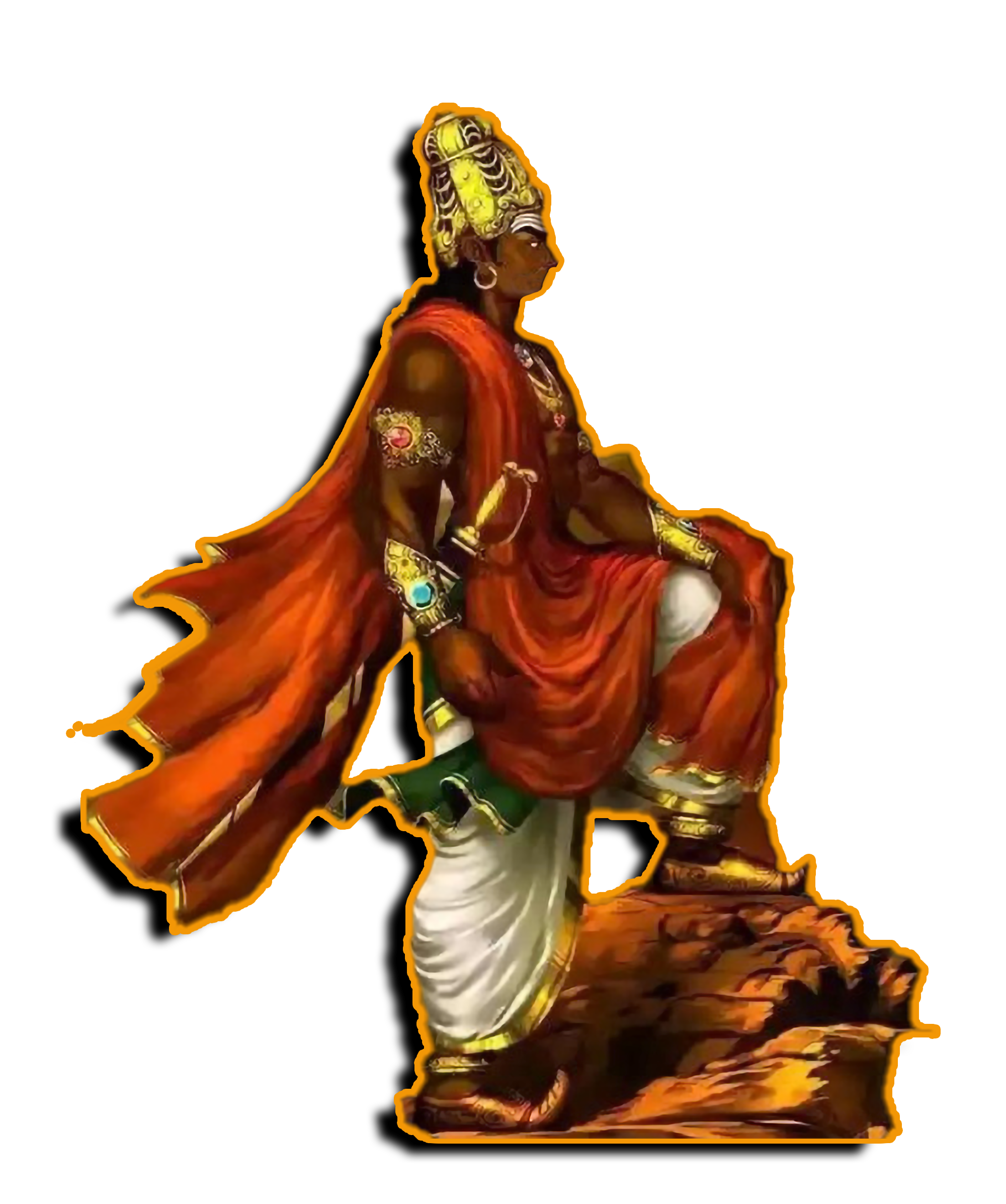Warriors don't fight to achieve Fame. They fight because they carry courage in their Veins and because of that, they secure a place in History.
Table of contents [Show]
Introduction
India is the home of many great warriors who have engraved their names in history with their inherited courage from their forefathers and their hard-earned fearlessness. Seasons, like any changing scenario, have passed for millennia, and fashion trends are no exception. But one truth that has not changed to this day is that warriors born in the land of our country not only live their lives with dignity but also left a legacy behind when they die.
This fashion trend was nothing unusual in 15th century India, which witnessed the heroism of "Vir Hambir Malla," the 49th monarch of the Malla Bhoom, who was contemporary with Mughal Emperor Akbar.
About Malla Dynasty and Hambir Malla
According to Gregorian Calendar, the Malla Dynasty came to power in the 7th Century AD. Its first ruler was Adi Malla (694 AD), followed by Dhari Malla and his son Hambir Malla who was born in 1565 AD, whose narrative is told here.
Hambir Malla who was also known by the names Bir Hambir, Bir Hambeera, and Veer Hambir was the son of Dhari Malla, the 49th king of the Mallabhum kingdom, who ruled from 1565 to 1620 AD. He was also contemporary to the Mughal emperor AKBAR and fought from his side against Afghans and thus gaining the trust of the Mughals.
Hambir was a religious figure who practiced Vaishnavism. The tale of two Vaishnava works, Prem Vilas by Nityananda Das and Bhakti Ratnakar by Narahari Chakrabarti, demonstrates this. Bir Hambir robbed Srinivasan and his other disciples when he was going from Vrindavan to Gaur carrying many Vaishnava Manuscripts, according to the account. Later, Hambir was so moved by Srinivasana's recital of Bhagwat that he converted to Vaishnavism and designated him as his teacher, bestowing land and money on him.
Battles of Hambir Malla
Battle of Mundamala Ghat
During the Pathan rule of Soleiman Karani in Gaur, the kingdom of Bishnupur stood in the unique glory of the Rath region of Bengal. As a result, Daud Khan's Pathan troops attacked Bishnupur with large ammunition in 1575 AD. Due to the lack of readiness of their army for the battle with Dawood Khan, the people of Bishnupur seemed embarrassed at this point.
Then comes the moment when the hero, prince, Hambir Malla started the war with his army and fought bravely. Hambir and his army started the battle by worshipping the “Maa Mrinmayee”, the Kuladevi of Mallabhum.
The state of Bishnupur had 12 forts and Mundamal was one of them. As a result of this historical battle, Hambir defeated Dawood khan and his army was seen as the ground of corpses. Dawood Khan was prisoned and waited for his death sentence but was later released by Hambir Malla Dev as a gesture of mercy.
As per another story, Hambir Malla cut off the heads of the invading Pathan soldiers, made a garland (Mundamala), and offered it as a gift to the demon-destroying Maa Mrinmayidevi. As a result that place was called “Mundamalaghat”.
Second attempt of Pathans to capture Bengal
Several years after Dawood Khan's demise, the Pathan troops led by Katloon khan attempted to reassert their authority over the entire Bengal. Most Bengali rulers were vassals of the Mughal throne or were deposed by the Mughals, hence most of Bengali land was effectively under the Mughal influence at the time.
When news of the Pathan invasion reached the Mughal emperor Akbar, he immediately sent his main military commander, Man Singh, on a mission to protect the Bengal province. After reaching Bengal, Man Singh ordered the Mughals to set up their army camp near Arambagh in the Hooghly District and Pathans were in Bankura waiting for the Mughals. Meanwhile, an Incident occurred, that became the reason for the alliance between the Mughal Empire and the Malla Kingdom. Some historical accounts claim that Man Singh's son, "Prince Jagat Singh" of Amer, was captured by Pathan soldiers as Man Singh was returning to his base camp after peace talks with the Pathans. Man Singh was new to that region and found himself helpless to save his son.
Hambir Malla saw it as an opportunity to gain the trust of a powerful ally, and launched an attack on the Pathan leader Katloon khan and saved Jagat Singh. After this battle, Hambir gained the trust of the Mughal Throne, and Pathans lost the entire battle with their leader Katloon Khan who was Killed in this battle by Hambir Malla. Today, the place where Katloon Khan was killed and buried is known as “Katlunpura”. Hambir's Involvement In the battle shows his expert diplomatic skills and far-sightedness.
Constructions and Famous Events
Dal Madal Kaman(Cannon)
Dal Madal which means “Destruction of Enemy” was constructed by Jagannath Karmakar. Historian Maniklal Sinha wrote that there were critiques regarding the name “Cannon”. The general public believes Dal and Madal are two cannons. Later it was found incorrect. The story is, about Mallabhum, the kingdom of Malla Rajas was governed by Dharmathakura and a Dharamshila is known to be Dalmadal. Jagannath Karmakar gave it this name because of his ancestors in Karmakar Family. However, it is poorly kept nowadays and needs attention from the government.
Rashmancha
As the meaning goes, Ras means” Natak” and Mancha means “Stage” but according to Historians, Rashmancha is a historical building located in Bishnupur. It was constructed by Malla King Bir Hambir in 1600 CE. All the Radha Krishna idols were brought here for worship during Vaishnava Ras Festival by the locals.
Conclusion
Overall, we can say that, in our Indian history, many brave kings lived like lions and fought bravely, but Hamir Malla Dev was a king who not only fought bravely but also followed his religion wholeheartedly. Most importantly he gained the trust of the Mughal throne.
When Bishnupur was seen as hopeless during the attack of Dawood Khan, he came out of nowhere and conquered him bravely. That historical moment was unforgettable, not only for the people but from the historical perspective too. His cannons also became famous, many forts were built and many books were also written during his reign regarding Vaishnavism. Summing up, In the end, after his demise in 1620 AD, his son Dhari Hambir Malla ascended the throne.
Here is the story of Hambir Malla Dev covered in the video. https://youtu.be/R_pzmPFc3dU









